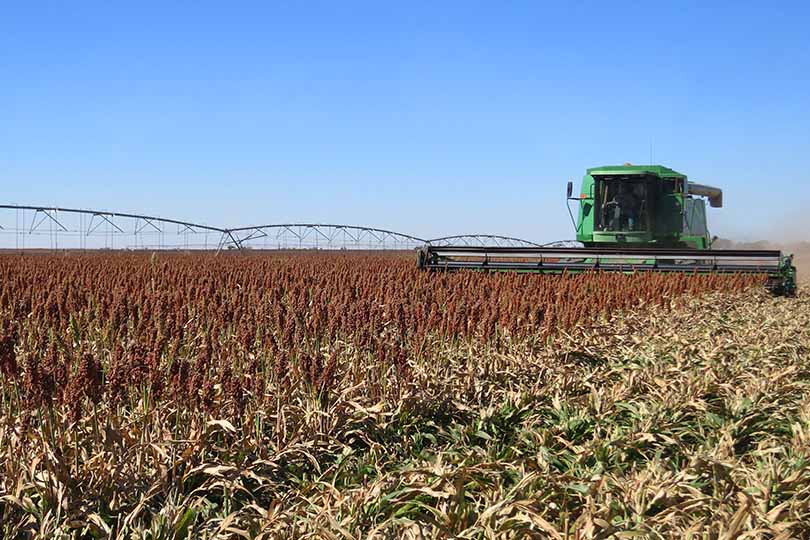By Jessica Domel
Multimedia Editor
Despite the prolific sugarcane aphids, Texas farmers are sticking with sorghum.
Farmers report they’ll plant about 1.8 million acres in Texas this year, according to the U.S. Department of Agriculture’s National Agricultural Statistics Service (USDA NASS).
The forecast is five percent lower than last year’s acreage, which was higher than usual.
“I think if you look at the overall trend in grain sorghum, our acres have been going up,” Wayne Cleveland, executive director of Texas Sorghum Producers, said. “China coming into the market had a huge effect on our acres. What we’re seeing today is some of China leaving the market, as well as a more robust price for cotton, which competes for acres with sorghum.”
As other crops fail, many farmers turn to sorghum because of its drought tolerance. Taking those acres into account, Cleveland estimates two million acres of sorghum will be grown in Texas this year.
“China is continuing to buy grain sorghum at a very robust pace. We think this will outstrip what producers can actually grow this year. They purchased another five million bushels [in early April]. The week before that was 8.5 million,” Cleveland said.
The farmers who are sticking with sorghum this year are taking care of it, he said. The average bushel per acre is going up in the state and across the nation.
“We’re on pace to actually outrun USDA’s prediction of 245 million bushels of production. We think we’ll be probably 40 or 50 over that, which usually in a supply and demand scenario works out good for growers,” Cleveland said.
Over the past three years, farmers have seen yield go from 62 bushels per acre to around 80 bushels per acre.
Quality is also on the rise.
“Hopefully that will compensate for some of the acres that are going to be lost,” Cleveland.
Sugarcane aphids, which reproduce quickly and leave a sticky residue on sorghum and sorghum-related plants, continue to plague growers.
“We see the aphid, but our growers are getting more dialed in to how to treat the aphid. They’re learning to scout on a more frequent basis. Those guys that are staying and planting are taking really good care of their grain,” Cleveland said. “This unfortunately has become a part of growing sorghum until we can find some varieties that aphid-proof.”
Sorghum right now is about 108 percent the value of corn, according to Cleveland, which is a good thing.
“It means it’s leaving into market that it wants to go to, that wants it. As you get up on the Plains, the basis gets a little less robust as cattle feeders don’t quite use it and it has a hard time making its way to the coast,” Cleveland said. “I think we’re seeing a little uptick in the market today that will be good for planting intentions as well.”
Texas sorghum is sold into many markets, including China and Mexico. It’s used for many things, including packing peanuts and human consumption.
“It tastes good and it’s got a great health benefit to it,” Cleveland said.

